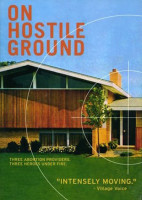On Hostile Ground Filming Locations

Where was On Hostile Ground filmed? On Hostile Ground was filmed in 3 locations across United States in the following places:
On Hostile Ground Filming Locations
Alabama is a southeastern U.S. state that’s home to significant landmarks from the American Civil Rights Movement. The city of Birmingham's 16th Street Baptist Church, now a museum, was a protest headquarters in the 1960s. Martin Luther King, Jr.'s church and the Rosa Parks Museum, dedicated to the activist, can be found in the capital of Montgomery.
Kalispell is a city in northwest Montana. It’s a gateway to vast Glacier National Park, with its peaks, alpine trails and wildlife like grizzly bears. Downtown’s restored 1800s buildings include the Conrad Mansion, now a museum with period furnishings. Hockaday Museum of Art focuses on Montana artists. South of the city, Flathead Lake offers beaches and forested Wild Horse Island, home to horses and bighorn sheep.
Rochester is a city on Lake Ontario, in New York State. Old industrial buildings cluster near the Genesee River’s High Falls. A vast collection of toys and dolls forms the core of the Strong National Museum of Play. The George Eastman Museum, on the early-1900s estate of the Kodak founder, has photography exhibits, film archives and gardens. Rochester Museum & Science Center has hands-on displays and a planetarium.
On Hostile Ground (2001)
A small number of healthcare professionals in this country have become targets in a civil war. They receive little public support for their work and face dedicated and unpredictable opponents. Their ranks are shrinking. On Hostile Ground enters the lives of three abortion providers to reveal the obstacles (practical, legal, and emotional) that they face everyday, and shows them struggle with the decision to perform this procedure. It allows providers who work on hostile ground to tell their stories by being themselves, without the help of a narrator. They reveal what their professional decision has done to their personal and family lives. While they each have their own stories, they are all driven more by personal experiences and spiritual beliefs than by political conviction. They each express anger, confusion, and resentment in their own way. By weaving together three very different character portraits, this documentary takes an unusual approach to a volatile social conflict, portraying abortion through the personal stories of those who are in mortal danger because they provide it.
